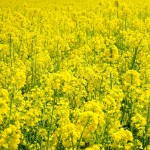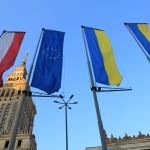Бразилия разрабатывает специальную программу, которая предусматривает возможность химическим путем определять так называемую ДНК конфискуемого кокаина и тем самым устанавливать регион его происхождения, сообщают местные СМИ. Необходимый банк данных, призванный помочь в этой работе, уже сформирован, заявил журналистам глава федеральной полиции Бразилии Леандро Дайелло.
Методика, с помощью которой можно установить происхождение кокаина, включает в себя анализ алкалоидов в образцах наркотика с дальнейшим сопоставлением результата с различными видами алкалоидов в листьях коки, выращенных в определенных районах, сообщает портал InsightCrime. Подобная практика уже применяется в работе Управления по борьбе с наркотиками США. Однако процесс идентификации может оказаться более трудоемким в тех случаях, когда речь идет об анализе листьев коки, переработанных в комплексную массу в одной стране и очищенных до конечного продукта в другой.
Бразилия выступила с предложением использовать эту базу данных совместно с Боливией, поскольку эта страна считается крупнейшим производителем кокаина, который попадает в Бразилию. Информация об этом прозвучала из уст Дайелло на конференции в боливийском Ла-Пасе, посвященной укреплению регионального сотрудничества и совершенствованию законодательства в сфере незаконного оборота наркотиков. Во встрече приняли участие представители Бразилии, Боливии, Перу, Колумбии и Организации Объединенных Наций.
По сообщениям информационного агентства Prensa Latina, власти Бразилии также планируют начать применение беспилотных летательных аппаратов, чтобы остановить поток наркотиков, который проникает на ее территорию через протяженную и плохо контролируемую границу. В Ла-Пасе представители Боливии и Бразилии достигли соглашения, согласно которому бразильские беспилотники смогут совершать полеты в воздушном пространстве Боливии, патрулируя совместную границу этих двух стран, добавляет агентство.
Бразилия уже закупила два беспилотных самолета израильского производства и при необходимости сможет заказать дополнительные единицы таких летательных средств. Дистанционно управляемые летательные аппараты способны без перерыва находиться в воздухе 37 часов и преодолевать расстояние в 1000 километров. По словам Дайелло, которые приводит ВВС, такие воздушные средства во время полета смогут производить детальную фотосъемку людей и объектов.
Рост бразильской экономики сопровождается повышением спроса на наркотики в стране, в результате чего, по мнению представленного Европолом профильного доклада, возникает «…возможно, крупнейший рынок кокаина во всей Южной Америке». Имея весьма прозрачную границу, а в качестве соседей — страны, где кокаин производят в колоссальных объемах, Бразилия представляет собой для наркоторговцев растущий и доступный рынок сбыта. В этой связи разработка программы идентификации и создание централизованной базы данных наряду с соглашением об использовании беспилотных летательных аппаратов вдоль бразильско-боливийской границы наглядно свидетельствуют о все более пристальном внимании, которое правительство Бразилии уделяет борьбе с наркотрафиком, а также о готовности государства активно выделять средства и ресурсы для обуздания того потока наркотиков, который, едва сдерживаемый границей, стремится на территорию страны.


